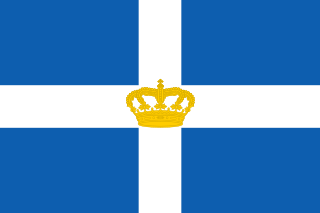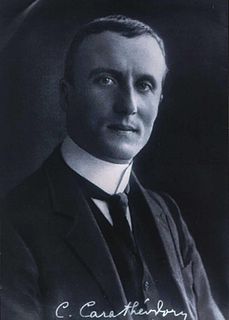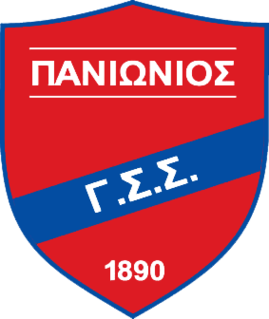 W
WThe occupation of Smyrna was the military control by Greek forces of the city of Smyrna and surrounding areas from 15 May 1919 until 9 September 1922. The Allied Powers authorized the occupation and creation of the Zone of Smyrna during negotiations regarding the partition of the Ottoman Empire to protect the ethnic Greek population living in and around the city. The Greek landing on 15 May 1919 was celebrated by the substantial local Greek population but quickly resulted in ethnic violence in the area. This violence decreased international support for the occupation and led to a rise of Turkish nationalism. The High Commissioner of Smyrna, Aristeidis Stergiadis, firmly opposed discrimination against the Turkish population by the administration; however, ethnic tensions and discrimination remained. Stergiadis also began work on projects involving resettlement of Greek refugees, the foundations for a University, and some public health projects. Smyrna was a major base of operations for Greek troops in Anatolia during the Greco-Turkish War (1919–1922).
 W
WConstantin Carathéodory was a Greek mathematician who spent most of his professional career in Germany. He made significant contributions to real and complex analysis, the calculus of variations, and measure theory. He also created an axiomatic formulation of thermodynamics. Carathéodory is considered one of the greatest mathematicians of his era and the most renowned Greek mathematician since antiquity.
 W
WChrysostomos Kalafatis known as Saint Chrysostomos of Smyrna, Chrysostomos of Smyrna and Metropolitan Chrysostom, was the Greek Orthodox metropolitan bishop of Smyrna (Izmir) between 1910 and 1914, and again from 1919 until his death in 1922. He was born in Triglia, Turkey in 1867, considerably aided the Greek campaign in Smyrna in 1919 and was subsequently killed by a lynch mob after Turkish troops took back the city at the end of the Greco-Turkish War of 1919–1922. He was declared a martyr and a saint of the Eastern Orthodox Church by the Holy Synod of the Church of Greece on 4 November 1992.
 W
WThe burning of Smyrna destroyed much of the port city of Smyrna in September 1922. Eyewitness reports state that the fire began on 13 September 1922 and lasted until it was largely extinguished on 22 September. It began four days after the Turkish military captured the city on 9 September, effectively ending the Greco-Turkish War, more than three years after the landing of Greek army troops at Smyrna on 15 May 1919. Estimated Greek and Armenian deaths resulting from the fire range from 10,000 to 125,000.
 W
WSaint Gregory (Orologas) of Kydonies the Ethno-Hieromartyr, also Gregory of Cydoniae, 1864–1922, was a Greek Orthodox metropolitan bishop in the early 20th century in northwest Anatolia, in the Ottoman Empire.
 W
WThe Ionian University of Smyrna was a university established by the local Greek authorities during the Greek temporary liberation of Smyrna (1919–1922), today Izmir, Turkey. The initiative for the organization of the institution was undertaken by the mathematician Constantin Carathéodory. However, the University of Smyrna, the first to be established in the city, never operated due to the Greek defeat in the Greco-Turkish War and the subsequent evacuation in September 1922.
 W
WNea Smyrni is a municipality and a southern suburb of Athens, Greece. At the 2011 census, it had 73,076 inhabitants. It was named after the former Greek city Smyrna, whence many refugees arrived and settled in the Nea Smyrni area following the 1922 catastrophe of Asia Minor and the Great fire of Smyrna, as a result of the Greco-Turkish war.
 W
WPanionios G.S.S. Football Club, the Pan-Ionian Gymnastics Club of Smyrna, more commonly known as Panionios F.C. or simply Panionios, is an Greek football club based in Nea Smyrni, Athens, Greece. Part of Panionios G.S.S., Panionios F.C. is the oldest Greek football club.
 W
WAmbrosios Pleiathidis also known as Ambrosios of Moschonisia was the Greek Orthodox metropolitan bishop of Moschonisia, in modern Turkey, from February to September 1922. He was executed by the Turkish Army at the end of the Greco-Turkish War (1919-1922).
 W
WThe Metropolis of Smyrna is an ecclesiastical territory (diocese) of the Ecumenical Patriarchate of Constantinople, modern Turkey. The Christian community of Smyrna was one of the Seven Churches of Asia, mentioned by Apostle John in the Book of Revelation. It was initially an archbishopric, but was promoted to a metropolis during the 9th century. Although the local Christian element was reduced during the 14th and 15th centuries, it retained its ecclesiastical autonomy continuously until 1922.
 W
WAristeidis Stergiadis was the Greek high commissioner, or governor-general, of Smyrna during the Greek occupation of the city from 1919 to 1922.